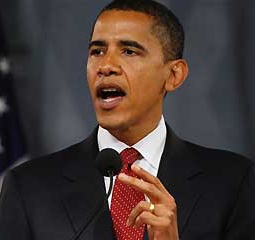
Crucial Tuesday, as it has been dubbed, has perhaps been the most entrancing primary thus far. The March 4th elections provided a decisive nominee for the Republicans and further extended the Democratic Presidential race to the White House.
The polls in Vermont were the first to close and it came as no surprise that Barack Obama clinched the win and secured his twelfth consecutive victory. The top issue among voters was the call for an end to the war in Iraq. The majority of citizens in the state of Vermont consist of white men and women. These groups sided with Barack Obama, indicating that there was no race or gender gap present. He managed to gain support among all age groups, especially with seniors and younger voters. On the Republican side, John McCain easily took the state with an overwhelming majority.
The results in the small state of Rhode Island became very significant for the Democrats. Hillary Clinton finally prevailed after having a long losing streak, and managed to put an end to Barack Obama’s successive wins. John McCain furthered his delegate lead by winning Rhode Island and inched closer to securing his nomination.
Of the two big states of this Tuesday’s primaries was the industrial state of Ohio. John McCain did not have any trouble in clinching the win. The Democrats had to battle it out. Here, the most important issue for the voters was the economy. Oddly, the 1994 North American Free Trade Agreement (NAFTA) played a part in this election. NAFTA has been blamed for the lack of jobs in Ohio. Hillary Clinton used this issue to leverage her campaign. She accused Barack Obama, who had declared he was not in favor of the agreement, of not being genuine in his stance.

Unlike Vermont and Rhode Island where the results were easily predicted, Ohio was a toss up. It could have gone to either Democratic contender. The cities of Cleveland, Columbus, and Cincinnati all held high percentages of African American votes which Barack Obama easily won. The populated regions are areas where Barack Obama has consistently performed well, and he continued to do so on March 4th. There was a class split among the voters as college graduates voted for Obama while Clinton relied on the ever important blue collar vote. She campaigned extensively in rural areas and in small communities such as Akron and Youngstown. Working class towns such as these are where Hillary Clinton dominated. She also had the support of Union members. In the end, Ohio was a must win for Hillary Clinton who sighed a breath of relief after carrying the state.
The win has provided her with a boost of confidence. It is a state that in the past has always determined the Presidency. This victory also provides Hillary Clinton with momentum for the April 22nd primary in Pennsylvania, a state with a significant amount of delegates that has a voting trend very similar to Ohio.
In Texas, a chaotic two step voting process was put in place. Two thirds (2/3) of the votes would come from the primary elections, while one third (1/3) came from the caucuses that were held late into the night. For the Democrats the race could not have been any closer. The crucial Latino votes were significant for Hillary Clinton to clinch an essential win. Just as the African American votes have consistently been valuable for Obama, Clinton had the strong support from the Latin American population. Obama was able to keep the competitive race almost dead even by winning in Austin, Dallas, and Houston. He also did well among independents. The Texas primary was historic for John McCain. After sweeping all four states, McCain was able to do what he failed to do eight years ago, secure his Republican Presidential nomination. As a result, Mike Huckabee finally conceded.

John McCain can now begin strategizing for a fall campaign. He is expected to meet with President Bush on Wednesday, March 5th to get his endorsement.
Hillary Clinton’s success in the March 4th primaries has prevented the super delegates from shifting rapidly in favor of her opponent. Barack Obama is stressing that he is still the front runner in the race since he is still ahead with pledged delegates, but this lead is still a very small one. The campaigning for the Democrats took an interesting turn in the upcoming weeks prior to Tuesday’s elections. Hillary Clinton changed her tactics and used aggressive campaigning. This may have helped her in the most recent set of primaries indicating that she may use negative campaigning in the future.
The March 4th elections could have been decisive for both the Republicans and Democrats. Although the Republicans have managed to select a nominee, it is a very different scenario for the Democrats, who are still divided. The race will continue to go on.
